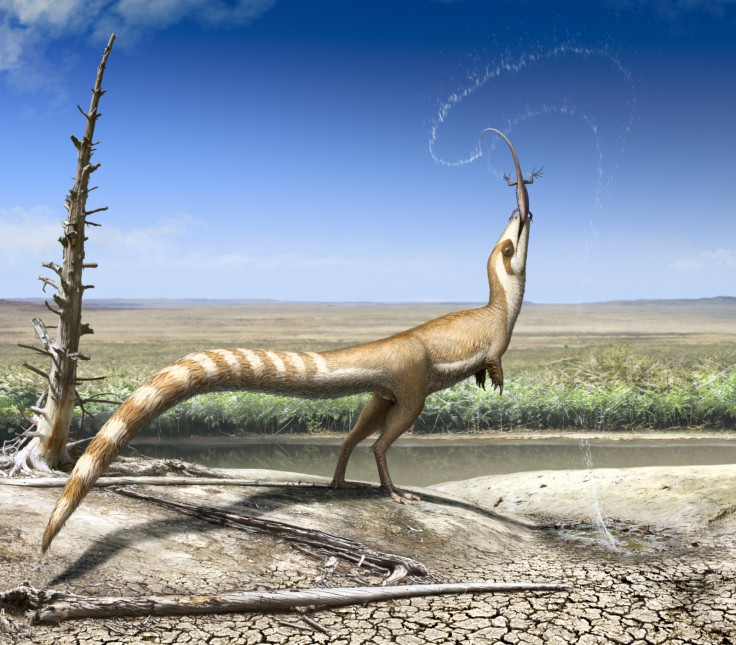Sinosauropteryx: Feathered dinosaur hid from predators using 'bandit-mask' and camouflage
The Chinese dinosaur lived around 130 million years ago.

A small, feathered dinosaur known as Sinosauropteryx used colour patterns, including a stripe across its eye which resembles a bandit mask, to avoid being detected by its predators and prey, according to researchers from the University of Bristol.
Using remnants of skin and feathers, the scientists reconstructed the colour patterns of the Chinese dinosaur, which lived around 130 million years ago, showing that it had multiple types of camouflage.
"Far from all being the lumbering prehistoric grey beasts of past children's books, at least some dinosaurs showed sophisticated colour patterns to hide from and confuse predators, just like today's animals," said Fiann Smithwick, leader of the study which is published in the journal Current Biology.
"Vision was likely very important in dinosaurs, just like today's birds, and so it is not surprising that they evolved elaborate colour patterns."
These patterns can also be found in modern animals, serving different functions. The dark stripe, or 'bandit mask', around Sinosauropteryx's eye is similar to a pattern found in modern birds – the ancestors of dinosaurs – which helps them to hide from predators. Sinosauropteryx also had a striped tail, a feature which helps modern animals to confuse both predators and prey.
"Dinosaurs might be weird in our eyes, but their colour patterns very much resemble modern counterparts," said Jakob Vinther, a senior author of the study. "They had excellent vision, were fierce predators and would have evolved camouflage patterns like we see in living mammals and birds."

Sinosauropteryx was also countershaded meaning it had a dark back and a lighter belly. This can be seen in many modern animals as it helps to make the body appear flatter and less 3D, helping them to blend in with their background and avoid detection.
One of the co-authors of the recent study, Innes Cuthill, has shown in previous work how the precise pattern of countershading relates to the specific environment in which any given animal lives.
Animals that reside in very open habitats, such as savannahs, generally tend to have a shading pattern that changes from dark to light sharply and on the side of the body. Creatures that live in more closed habitats, such as forests, on the other hand, usually display patterns which change from dark to light much more gradually.
Analysis of the dinosaur's colour patterns suggested that Sinosauropteryx lived in more open habitats and not in dense forests as researchers previously thought.
"We've shown before that countershading can act as effective camouflage against living predators," said Cuthill. "It's exciting that we can now use the colours of extinct animals to predict the sort of environment they lived in."
Smithwick added: "By reconstructing the colour of these long-extinct dinosaurs, we have gained a better understanding of not only how they behaved and possible predator-prey dynamics, but also the environments in which they lived.
"This highlights how palaeocolour reconstructions can tell us things not possible from looking at just the bones of these animals."





















